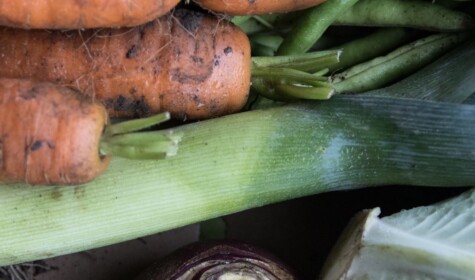Even as the movement to re-establish a community-centered food system diversifies its mission and expands to encompass greater civic needs, a stiff interrogation of its merit remains unyielding. Who does local agriculture actually serve? Recently, local agriculture is making gains in public interest and support as it promises to create meaningful social and economic impacts for communities, such as education and economic development – in addition to producing food. However, the term ‘local food’ still means different things to different people.
Advocates of local food and agriculture promote a vision of transformation and justice, and many local food initiatives strive toward the goals of increasing access to healthy food, alleviating hunger and aiding economic development, such as through partnerships like farm-to-school and farm-to-hospital. The potential to realise these initiatives, however, remains constrained. Criticising voices contend that investing resources in local agriculture provides benefits only to a privileged minority, with whom rests the power to purchase these goods. With this view, the words, ‘local food’ connote ‘elitist’ and, as a whole, suggests an exclusion of our most vulnerable and marginalised people.
Criticism recognising local food as elitist points to socio-economic barriers to access, and it raises an alarm to the inequalities of the food system. Already increasing levels of food insecurity and nutrition inadequacy are exacerbated by the 2020 COVID-19 pandemic where, currently, 23% of Americans and 29% of American households with children, are struggling to put food, especially fruits and vegetables, on the table. Though the criticism is rooted in sympathy for this urgent and growing disparity, its ongoing narrative inadvertently causes a disservice to the same community its sentiment claims to defend. While participants in the public conversation vie over whether ‘local food’ is indeed elitist, a community health approach looks to expand the conversation by broadening participation in the dialogue. After all, what does ‘local food’ mean to the members of communities who experience barriers to acquiring it?
One of community health’s most important milestones, accomplished in 1989 by the World Health Organization, is Community Involvement in Health Development. This publication establishes decision-making in public affairs to be both ‘the right and the duty’ of people, when impacts from decisions affect their lives or the groups that they belong to. Public decisions to support or not support regional farms impact community capacity to produce, process and distribute food according to its own needs. The right of all affected persons to participate in this conversation is the right to be involved in decisions that impact individual access to nutritious food.
The relationship between community food security and household food security was recognized in 1996 when Congress passed the Community Food Security Act (CSFA). While there is no universal definition of community food security, the concept generally expands the scale of a household to the wider community unit. Assessing community food security identifies social, economic and institutional factors that may affect food supply within a specific area. CSFA acknowledges that dynamic causes may affect a community’s supply of nutritious food and promotes local agriculture as a dependable means to improve quantity, quality and affordability of food. Its initiative sought ‘to forge partnerships between the USDA and local communities to build local food systems, decrease need and improve nutrition’.
Reducing the factors that impact community food supply and food system injustices to the simplistic statement, ‘local food is elitist,’ may be undermining people’s existing efforts and interest in obtaining healthier foods. In this case, the narrative has the effect of excluding marginalised groups from public discourse by overshadowing their voices. Moreover, the dominant voice calling local food elitist has the effect of naturalising inequality and the problems of food and nutrition disparity. The naturalisation of inequality, according to Pablo Francisco Di Leo from the University of Buenos Aires, occurs when certain subjective experiences are not granted access to public discourse and decision-making. In turn, a fixed story replaces a plurality of experiences that belong to marginalised persons and groups. Regardless of the fixed story’s authenticity – that is, its alignment with people’s subjective experiences or interests – and with the power of sheer repetition, the narrative begins to appear ‘correct’.
When it comes to equity, decision-making and providing healthy food, the untrustworthiness of the ‘correct’ narrative was recently made clear. In 2017, under the Trump Administration, the United States Department of Agriculture attempted to roll back nutrition standards for school meals, which are regulated by the Healthy, Hunger Free Kids Act of 2010 (HHFKA). HHFKA aimed to limit excess sugar, sodium and refined grains served in schools and to additionally increase children’s access and consumption of fruits and vegetables. The school regulations are credited with being the most important national programme for slowing rates of childhood obesity, where rates tripled between the 1970s and 2005.
Announcing the roll-backs, the Administration’s USDA defended the new policy by stating, ‘Schools face increasing fiscal burdens as they attempt to adhere to existing, stringent nutrition requirements.’ However, the announcement disregarded the agency’s own prior findings; the USDA reported schools to be 99% successful when complying with the nutrition standards. In fact, though the Administration claimed schools struggled financially when providing children healthy food, research conducted by independent entities found that exactly the opposite was true. For example, research conducted by the PEW Charitable Trust and Robert Wood Johnson Foundation found that costs were rarely cited as significant barriers to providing children with fruits, vegetables, whole grains or healthy snacks. The Administration’s divergence of information, in contradiction to the health science community, was able to exist because a space was first carved out by a fixed story that calls certain nutritious foods ‘elitist’.
While the move made by the Administration’s USDA rested on the ‘correctness’ that fruits, vegetables and whole grains are too costly to provide to America’s children, a number of state governments responded with litigation. In the case of, Τhe States of New York, California, Illinois, Minnesota, New Mexico, and Vermont and the District of Columbia v. United States Department of Agriculture, United States Department of Food and Nutrition Service and Sonny Perdue, the plaintiffs declared their mission to protect the health of school children. They argued that the USDA failed to provide the public with an opportunity to comment on the proposed nutrition changes. Legal action attacked the Administration for attempting to bypass the public response process that is required by regulatory law. The Plaintiff States did not accept the ‘expense’ narrative about nutritious foods that was exploited by the Trump Administration.
The federal decision-makers aimed to abolish HHFKA, which would have eliminated, subsequently, children’s access to healthy foods. Where criticisms that attack the high costs of healthy foods usually aim to defend marginalised groups, Trump’s USDA perverted these ideas for a policy that would have had the effect of solidifying nutrition disparity. The Plaintiff States, however, proved there was an abuse of power that disregarded the fiscal realities of the nutrition programme, lived experiences of citizens and citizen children, as well as the policy’s positive health outcomes. State and county governments coordinate and provide public services to communities and have a firm pulse on local food security and insecurity. The work of local governments includes tracking health policy and programme uptake, compliance and impacts. By gaining legal victory, the State Governments prevented the Trump Administration from naturalising nutrition and health disparity with all the might of the law of the land.
Far from defending marginalised communities, the narrative that calls local food elitist excludes people from public discourse by attempting to speak for them. Often, in doing so, inequality is naturalised rather than being properly addressed. The narrative does added harm because it suspends investments that state, county and city governments can make to support community food security, gaining greater local control over strategic solutions.
The Presidency of Donald Trump compelled states and counties to assert and re-define their roles and responsibilities around citizen welfare. When it comes to protecting food and nutrition security, local governments must continue to assert their roles. Instead of attempting to speak for their constituencies, state and regional governments should facilitate citizens inclusive participation in processes of local decision-making. Engagement with citizens should aim to learn how people perceive and value locally produced food; then, it can respond to citizens’ recommendations for using local agriculture to improve individual and community health. The promotion of a robust regional agriculture, advanced through inclusive, participatory processes of decision-making, can increase community availability and access to nutritious food. Further, by facilitating local production, regional governments can close the gap when industrial agriculture and global food supply chains fail to meet the demand for fruits and vegetables as well as emergency preparedness.
State and regional governments have an opportunity to leverage local resources, so that producers can choose to grow food crops like fruits, nuts and vegetables with less risk. With strategic coordination, local governments can partner with regional farmers on food and nutrition security programmes, to guarantee consumer demand for food producers. By exercising this authority, regional governments can provide for local economic opportunity and ensure diverse inclusion and equitable access to locally produced fruits and vegetables.
Photograph: Rural Matters







